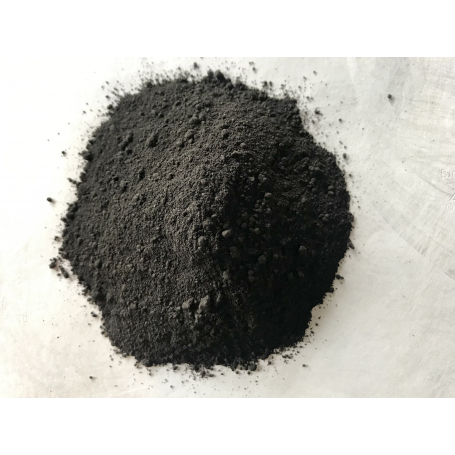FIR Humic Clay
FIR HUMIC CLAY
It consists mainly of clay in which the humic acids and carbon are “baked in” in the clay crystal. FIR is one of the few approved uses of humic acid in animal nutrition.
FIR is originally the abbreviation for Physical Ion Regulator. Due to its special properties, it has a regulating, facilitating function with regard to ions. In addition, FIR has a facilitating function for microorganisms. FIR-carbonclay has positive effects on fermentation, protein efficiency and intestinal health.
Properties:
· Original FIR contains approx. 6x more humic acids.
· Many times finer than other carbonaceous minerals.
· Has been made dust-free, making it easier to process.
· Contains humic acids and carbon clay that can bind a large group of different toxins together
· Humic acid is not added but is naturally present.
Combining top sport with animal welfare:
· Better digestion and feed intake
· Soothing with sensitive abdomen / intestines
· Toxin binder from roughage
· Better resistance
· Dryer legs
· Stronger hooves
· Helps with diarrhea problems
· Healthier house climate
· Improve fertility
Nutritional advice:
Horses and ponies: about 10 grams to a maximum of 15 grams per day per 100 kg weight.
The Horse Therapist will measure the total amount per day per individual, the needs can sometimes vary.
Extra information:
FIR recycling system dairy farming
FIR cycle system stands for efficient, economic and environmentally responsible dairy farming. In this cycle system, the relationship digestion-manure, manure-soil and soil-roughage receive a lot of attention. In conventional dairy farming, people are often blinded by milk production, which means that the entire farm system remains underexposed. With all its consequences: reduced health of dairy cattle, lower production efficiency, lower economic performance and a greater burden on people, animals and the environment. So central that too little attention is paid to these relationships. The aim of the FIR recycling system is to close the manure-soil-plant-animal-manure cycle as much as possible and to minimize the emission of harmful substances. The FIR cycle system aims for an integrated approach.


